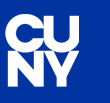Publications and Research
Document Type
Article
Publication Date
2025
Abstract
Translanguaging posits that all people make meaning, communicate, and learn by orchestrating heterogeneous features from a unitary repertoire in ways that defy named languages and other socially constructed language categorizations. In this chapter, we share insights about translanguaging theory for applied linguistics by revisiting themes we surfaced in an encyclopedia article we authored a half-decade ago, specifically reconsidering our 2017 tenets in light of scholarship that has (a) deepened translanguaging's relationships to dismantling social and political hierarchies; (b) emphasized how translanguaging has been used to highlight the heterogeneity of all language-in-use, and not just the practices of those people recognized as bi/multilinguals; and (c) explored how metaphors for translanguaging such as “orchestration” can help researchers and educators consider types of semiosis that go beyond the linguistic. In recognizing that named language and modal categories and the hierarchies set up among them are socially constructed and ideological, and that the practices of people defy those categorizations, translanguaging can help fields like applied linguistics reframe research, teaching, and learning around people's creativity and criticality, as determined by their own logics.


Comments
Uploaded proof with permission from publisher. Vogel, S., & García, O. (2025). Translanguaging: Leveraging Theoretical Shifts Towards Social Change. In C. Chapelle (Ed.), The Encyclopedia of Applied Linguistics, 2nd Edition. Wiley-Blackwell. https://onlinelibrary.wiley.com/doi/10.1002/9781405198431.wbeal1488.pub2